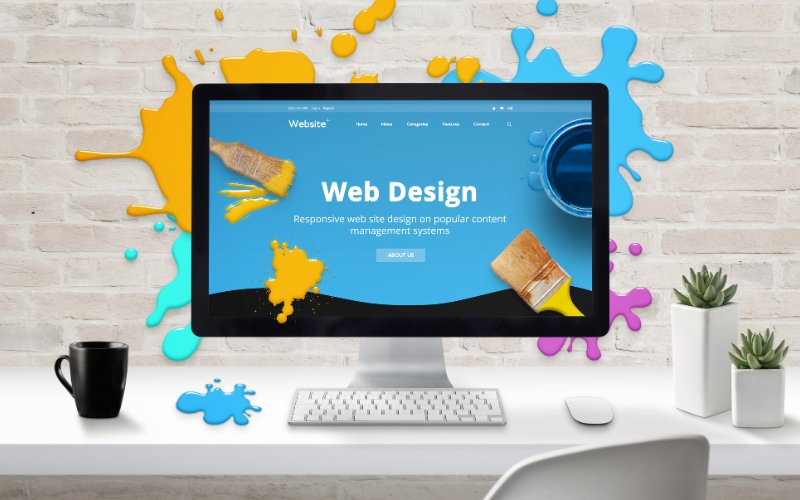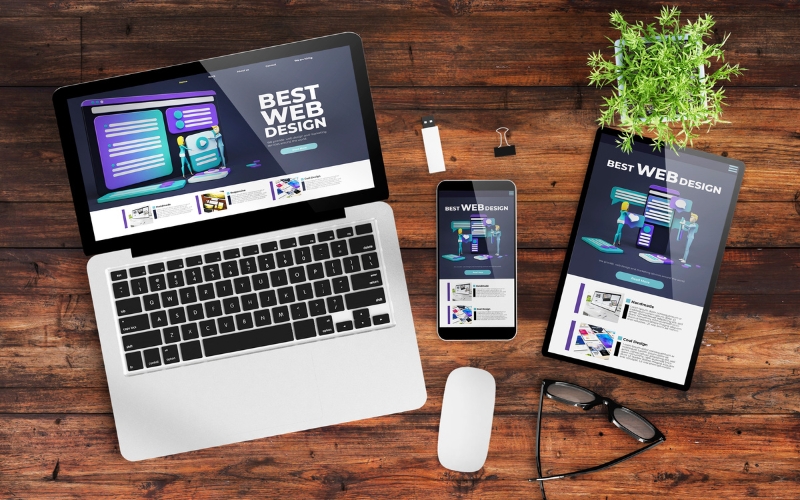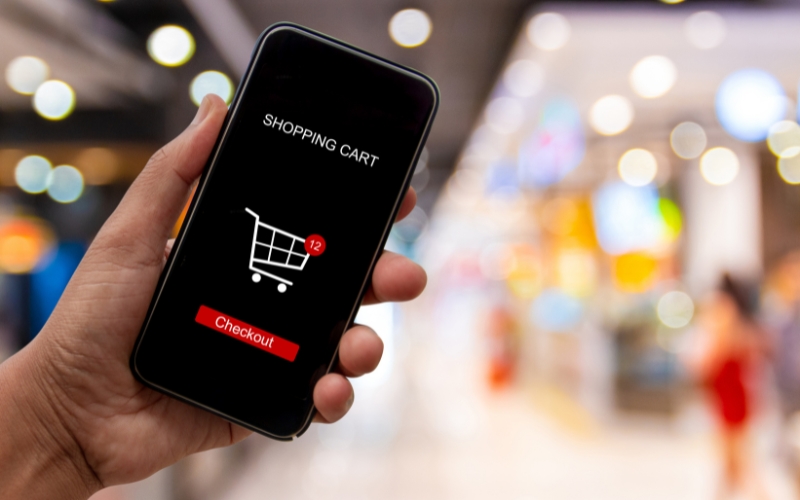
Creating a user-friendly online store design is essential for driving customer satisfaction and conversions in the competitive e-commerce landscape. At the heart of this lies intuitive navigation, which ensures that visitors can seamlessly explore your store and find what they’re looking for without frustration. From clear menus to logical categorization, every design element plays a role in delivering a streamlined shopping experience that keeps users engaged and coming back.
Prioritizing Intuitive Navigation: Guiding Your Customers Seamlessly

When it comes to creating a user-friendly online store design, intuitive navigation is a cornerstone. Customers expect to find what they need quickly and without confusion. An overly complex or poorly structured navigation system can lead to frustration and ultimately drive potential buyers away. To ensure your online store is easy to navigate, focus on creating clear menus, breadcrumb trails, and a logical layout that makes exploring your site a breeze.
Designing Clear Menus
The foundation of intuitive navigation is a well-structured menu. Your menu should be prominently placed, typically at the top of the page, and should include concise labels for categories and subcategories. For instance, if you’re selling fashion, categories like “Men,” “Women,” and “Accessories” are clear starting points. Subcategories such as “Tops,” “Bottoms,” and “Shoes” under each category guide users further into the site. This logical hierarchy is a key element of a user-friendly online store design.
Leveraging Breadcrumb Trails
Breadcrumb trails are another essential feature that enhances navigation. These small text paths, often located at the top of a page, show users where they are within the site’s hierarchy. For example, a breadcrumb might display “Home > Women > Shoes > Sandals,” allowing customers to backtrack easily. This feature not only improves navigation but also reinforces the logical flow of your user-friendly online store design.
Incorporating Search Filters
Modern customers often want to narrow down their options quickly, and search filters are a powerful way to enable this. Filters for price range, color, size, or brand allow users to find exactly what they’re looking for without sifting through irrelevant products. Including a search bar with auto-suggestions further enhances usability, making your store more appealing and functional.
Logical Categorization
Logical categorization of products is essential for an effective user-friendly online store design. Group products in ways that align with how customers think. For example, rather than mixing all items into broad categories, provide granular subcategories for better clarity. This reduces cognitive load and helps users find items faster.
The Result: Enhanced User Experience
By prioritizing intuitive navigation, your online store becomes a space where customers enjoy browsing and shopping. Implementing clear menus, breadcrumb trails, search filters, and logical categorization ensures a seamless and efficient experience, reflecting a truly user-friendly online store design. When users can find what they need effortlessly, they’re more likely to stay, explore, and complete their purchases.
Crafting an Engaging Homepage: Your Store’s First Impression

Your homepage serves as the digital storefront of your business, making it one of the most critical aspects of a user-friendly online store design. An engaging and well-structured homepage is key to capturing attention, encouraging exploration, and guiding visitors toward making a purchase. With fierce competition in e-commerce, your homepage needs to stand out by being visually appealing, informative, and intuitive.
Visual Appeal That Draws Users In
The visual design of your homepage should immediately resonate with your target audience. Use high-quality images that showcase your products in the best light. For instance, a lifestyle image of a model wearing your brand’s clothing creates a connection with potential buyers. Colors and fonts should align with your brand identity, reinforcing a cohesive look. These visual elements contribute to a memorable and user-friendly online store design.
Clear and Compelling Calls-to-Action (CTAs)
Strategic placement of CTAs on the homepage is essential for driving user engagement. Buttons like “Shop Now,” “Browse Collections,” or “View New Arrivals” should be prominent and easy to locate. Ensure the CTAs are action-oriented and encourage users to take the next step. For example, a well-placed “Explore Bestsellers” button can direct users to popular products, streamlining their journey within your user-friendly online store design.
Highlight Key Information
A successful homepage provides visitors with all the essential information at a glance. Include sections for featured products, current promotions, and any new arrivals to pique interest. A rotating banner or carousel can be a great way to highlight multiple offerings without overwhelming the page. However, balance is key—too much clutter can detract from the user-friendly online store design you’re aiming for.
Intuitive Layout for Seamless Interaction
An intuitive layout ensures users can navigate your homepage effortlessly. Place your navigation menu in a prominent location, typically at the top, and include a search bar for quick access to specific products. Group content into clear sections, such as “Trending Now” or “Shop by Category,” to guide users naturally through the page.
Building Trust Through Your Homepage
Trust-building elements, like customer testimonials, security badges, and easy-to-locate contact information, can further enhance your user-friendly online store design. These features instill confidence and encourage users to explore further.
By focusing on a visually engaging and functional homepage, you set the tone for the rest of the shopping experience. A well-crafted homepage is the cornerstone of any successful user-friendly online store design, making it an investment worth prioritizing.
Optimizing for Mobile Users: Responsive Design as a Must-Have

In today’s mobile-driven world, having a user-friendly online store design optimized for mobile users is no longer optional—it’s essential. Mobile devices account for a significant portion of online shopping traffic, and ensuring that your store provides a seamless experience on smaller screens can directly impact your sales and customer satisfaction. Responsive design, fast loading speeds, and thumb-friendly navigation are the cornerstones of this strategy.
Why Mobile-First Design Matters
Mobile-first design prioritizes the mobile shopping experience, ensuring that all elements of your online store are easily accessible on a smartphone or tablet. This approach guarantees that images, text, and menus adjust seamlessly to fit smaller screens without compromising usability. A user-friendly online store design caters to mobile shoppers by delivering a streamlined, visually appealing layout that minimizes frustration and encourages engagement.
The Importance of Fast Loading Speeds
Speed is critical for mobile users, as slow-loading pages can lead to high bounce rates. Research shows that even a one-second delay in loading time can drastically reduce conversions. To achieve a user-friendly online store design, optimize images, use efficient coding practices, and leverage Content Delivery Networks (CDNs) to ensure fast loading times. Tools like Google PageSpeed Insights can help identify areas for improvement and ensure your site meets mobile performance benchmarks.
Thumb-Friendly Interfaces for Easy Navigation
Mobile shoppers interact with their devices differently than desktop users, relying primarily on touch. A user-friendly online store design incorporates thumb-friendly interfaces, including large, tappable buttons, ample spacing between elements, and simplified navigation. Menus should collapse into hamburger icons to save screen space, and product pages should feature swipeable image galleries for a more interactive experience.
Seamless Mobile Checkout Process
The checkout process is a critical touchpoint for mobile users. To maintain a user-friendly online store design, simplify forms by using auto-fill features, enabling one-click payment options, and allowing users to check out as guests. Mobile-optimized payment gateways like Apple Pay and Google Pay further enhance the experience, reducing friction and boosting conversions.
Meeting Customer Expectations
By prioritizing mobile optimization, you demonstrate a commitment to meeting the needs of today’s tech-savvy consumers. A responsive, fast, and intuitive user-friendly online store design not only enhances user experience but also builds trust and encourages repeat visits, making it a vital aspect of any successful e-commerce strategy.
Simplifying the Checkout Process: Reducing Friction for Conversions

A seamless checkout process is at the heart of a user-friendly online store design, ensuring that customers can complete their purchases quickly and without frustration. An overly complicated or lengthy checkout can lead to abandoned carts and lost sales. By simplifying each step of the process, you can create an efficient and enjoyable experience for your customers while boosting your conversion rates.
The Power of Guest Checkout
One of the simplest ways to make your checkout process more accessible is by offering a guest checkout option. Forcing customers to create an account before purchasing can deter first-time buyers who prefer quick transactions. A user-friendly online store design should allow users to complete their purchase without unnecessary barriers while giving them the option to register later for added benefits like order tracking or future discounts.
Multiple Payment Options for Flexibility
Catering to diverse customer preferences with multiple payment options is another key element of a user-friendly online store design. Provide a variety of choices, such as credit/debit cards, digital wallets like PayPal and Apple Pay, and even Buy Now, Pay Later options. This flexibility ensures that customers can pay in the way they find most convenient, increasing the likelihood of a completed transaction.
Progress Indicators to Build Confidence
Long or unclear checkout processes can create uncertainty and lead customers to abandon their carts. Including a progress indicator—such as a step-by-step bar—gives users a clear understanding of where they are in the process and how many steps remain. This small but impactful feature is a hallmark of a user-friendly online store design, offering transparency and reducing drop-off rates.
Autofill and Error-Prevention Features
Streamlining form filling is essential for a frictionless checkout. Incorporating autofill options for shipping and billing details can save customers time and effort. Additionally, real-time error notifications for fields like credit card numbers or zip codes prevent users from submitting incomplete forms, enhancing the usability of your user-friendly online store design.
Mobile-Friendly Checkout for On-the-Go Users
A significant portion of e-commerce traffic comes from mobile devices, so ensuring that your checkout process is mobile-friendly is vital. A responsive and optimized checkout flow, complete with touch-friendly buttons and simple navigation, exemplifies a truly user-friendly online store design, accommodating customers on all devices.
By focusing on simplifying the checkout process, you reduce friction and improve the overall shopping experience. These enhancements build customer satisfaction and loyalty, reinforcing your user-friendly online store design as a trusted platform for seamless transactions.
Building Trust Through Visual and Functional Elements

Building trust is an essential aspect of a user-friendly online store design, as it directly impacts how customers perceive your brand and their willingness to make a purchase. Trust signals, combined with cohesive branding and consistent user experience, can reassure potential buyers that your store is reliable and secure.
Trust Signals That Enhance Credibility
Incorporating trust signals into your user-friendly online store design helps establish credibility with your audience. Display secure payment badges, SSL certifications, and other security indicators prominently, especially on checkout pages. These elements provide customers with peace of mind, ensuring that their sensitive information is protected.
Customer reviews and testimonials are equally important in building trust. Featuring authentic reviews from satisfied buyers on your product pages reinforces your store’s legitimacy. For example, showcasing a section with user-generated content, such as photos or videos of customers using your products, adds a layer of authenticity to your user-friendly online store design.
Clear Return and Refund Policies
Transparency is a cornerstone of trust. By providing clear and easily accessible return and refund policies, you demonstrate confidence in your products and show customers that their satisfaction is your priority. A user-friendly online store design ensures these policies are visible on every product page and linked during the checkout process, reducing hesitation and increasing conversions.
Consistency in Branding
A consistent brand identity plays a vital role in building trust. Use uniform colors, fonts, and logos across all touchpoints of your store. This consistency not only reinforces brand recognition but also creates a polished and professional appearance, enhancing the overall user-friendly online store design.
Reliable Functionality and Performance
Technical reliability is just as critical as visual elements in fostering trust. A store that loads quickly, functions smoothly, and is free of errors instills confidence in customers. A user-friendly online store design prioritizes fast load times, responsive layouts, and seamless navigation, ensuring that users encounter no technical issues that might undermine their trust.
Personalization for Added Connection
Adding personalized touches, such as tailored product recommendations based on browsing history, can further enhance trust. It shows customers that your store understands their preferences, making them feel valued and increasing their likelihood of returning.
By incorporating these visual and functional trust-building elements, your store can establish credibility and foster long-term customer relationships. A user-friendly online store design that emphasizes trust ensures a seamless and secure shopping experience, ultimately driving customer loyalty and business growth.
Conclusion
When designing your online store, it’s crucial to stay updated with the latest trends and best practices in e-commerce. Resources like Shopify’s Ultimate Guide to E-commerce Design offer valuable insights into creating a seamless shopping experience. By implementing these tips alongside a user-friendly online store design, you can ensure your store meets customer expectations and drives conversions effectively.
Prioritizing intuitive navigation is a cornerstone of a successful user-friendly online store design. By implementing clear menus, breadcrumb trails, and search filters, you create an environment that not only simplifies the shopping journey but also builds trust and encourages purchases. A thoughtfully designed navigation system ensures that customers can effortlessly explore your store, paving the way for higher satisfaction, repeat visits, and long-term business success.
For more details or to discuss your specific Website Development and Design, visit our Website Development and Design page.

